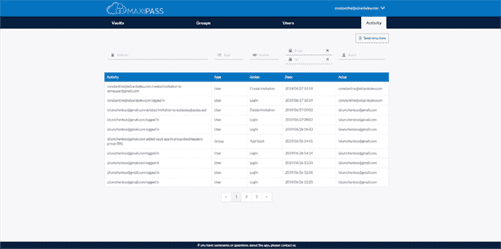When a team member moves a task all the way from ‘To-Do’ to ‘Done’, they go back to the leftmost column (‘To-Do’) and tackle the next pending task. It’s far better to use https://www.globalcloudteam.com/ an online Scrum tool, as they are packed with features that can increase your productivity. An online Scrum board is a digital representation of a physical task board.

On those boards, it’s possible to track the progress of work related to a specific story or a specific sprint, regardless of the team working continuously. The difference between Scrum and Scrumban is that the former focuses on strict iterations, while the latter looks to transform them gradually into a continuous flow. One advantage of Scrumban over Scrum is that it gives more freedom for teams to engage in planning sessions only when there is a need for them. This happens due to the introduction of continuous flow and “pull” ways of working.
Cons of using Scrumban
There might be no daily stand-up meetings, but project managers can generate reports with one click to monitor progress on tasks, project variance, health and more. The reports can be filtered to customize them to show just the data you want. The Kanban method also helps scrumban by limiting how many items are in progress at any time, which increases focus on specific tasks and helps productivity. Unlike scrum, in kanban individual roles are not clearly defined, so this adds some flexibility, too.

This is because the jump can be tough, especially for software developers. This combination offers a far less drastic option — teams can practice in Kanban without giving up the cushioned structure of Scrum. Your team has access to tons of other views to organize their tasks in the way they want.
Sprint backlog
Based on Agile, the key Scrum values are transparency, inspection and adaptation. Adaptation refers to any changes that must be made in response to problems or feedback, and is supported by the different sprint events, outlined below. The item is moved to the next bucket when the company has a plan and is ready to implement scrumban boards it. Teams decide what tasks they will pay more attention to during the planning event. This means that the ‘To Do’ list will specify what tasks need to be done first and which ones can be done later. In this Agile tool, your Board view columns aren’t just organized from left to right like a boring, regular Scrum board.

Unlike Scrum, which revamps the existing setup, Kanban focuses on increasing its efficiency. Scrumban’s rules and guidelines are simple so they can be adopted in any industry. The visual board helps the team stay on track and the deadline-free environment enables it to be flexible and adapt to changing requirements. Kanban is derived from the manufacturing industry and focuses on process steps. Proactive person, passionate about project management, digital transformation, growth hacking and entrepreneurship.
How to Use Kanban and Scrum?
They slow down work, mess with schedules and waste time and money. A scrumban board is a great way to find those bottlenecks in workflow and resolve them before they become a problem. Like kanban boards, a scrumban board allows project managers to see where the most tasks are and address the slowdown early and effectively.

One of the most common additions to this list is the Approval section. It is an important aspect of many business processes, and separating it from the WIP section allows a better understanding of the progress. You might say that the same effect can be reached with the help of due dates.
The Sprint
To make sure everything is crystal clear, let’s overview the roles, tools, and practices that Scrumban projects use. Prioritization In Kanban prioritization is optional, whereas in Scrumban it’s always done during on-demand planning sessions where new items can be pulled in the ‘To-Do’ section. It’s not impossible to alter it, however, that will require good negotiating skills on your part. But at the end of the day, it is just a project management method and the outcome depends on how companies implement it. The manager decides what tasks will be completed and which will be left unfinished.
- A) Scrum board – A Scrum board is always owned by one Scrum team that is working on a sprint.
- The sprint approach helps you actively involve customers in the development process.
- This is because the jump can be tough, especially for software developers.
- This allows teams to have more of an equal footing, which helps to reduce stress in a project.
- As a result of Kanban boards in Scrumban, teams can better organize the flow of work on large projects.
Because Scrumban is a hybrid of Scrum and Kanban, the team can learn key elements of the Scrum framework while still maintaining the flexibility of the Kanban method. One of the major benefits of using the Scrumban methodology is that it’s an extremely flexible form of project management. Here are a few ways you can use the Scrumban method to create more efficient processes for your team. One key benefit of Scrumban is the ability to plan and change your workflow at any time during the process.
Scrumban 101: Let’s Understand the Basics
As with any project management methodology, Scrum implements individual roles to assist with delegation, leadership, and organization amongst a collaborative team. The main roles essential to Scrum are Scrum master, product owner, and development team. Although it was created to be used for software development, other fields have begun using it as well. As an undefined, empirical process where actions and plans are developed according to consistent feedback and experience, Scrum maintains its value by upholding a few key principles. Also, for many projects, specifically infrastructure ones, there will not always be a shippable product at the end of each sprint, which is one of the requirements of Scrum. Rather, teams would work continuously and move to production or another iteration when ready.
In Scrumban we can add additional columns like ‘Dev,’ ‘Ready to Test,’ and ‘Test’ to highlight more phases in the development process. Time-based work Scrum and Scrumban are both time-based with recurring intervals of scheduled work. Scrum is usually divided into 1-4-week sprints with clear sprint goals, whereas Scrumban is more fluid and focuses on continuous work with 1-year, 6-month, and 3-month buckets. ClickUp is the only project management tool that lets you toggle between views with a single click! This way, you can switch between these multiple views while working on different parts of your Scrum project. Scrumban aims to introduce efficiency in the processes and only requires you to hold planning sessions when needed.
Other tools
Our Kanban software works perfectly in any business process and is designed for teams that want to visualize work on a Kanban board. Get ProjectManager and give your team the freedom of scrumban and project managers the tools to track and monitor their progress. And our team section gives project managers a place to collect team member skills to facilitate assembling effective teams.
Scrumban: A Hybrid Approach Redefining Agile Practices – Techopedia
Scrumban: A Hybrid Approach Redefining Agile Practices.
Posted: Mon, 03 Jul 2023 07:00:00 GMT [source]